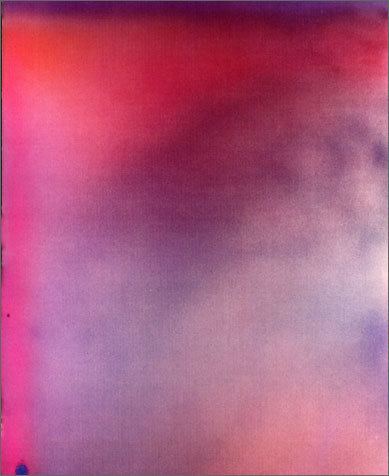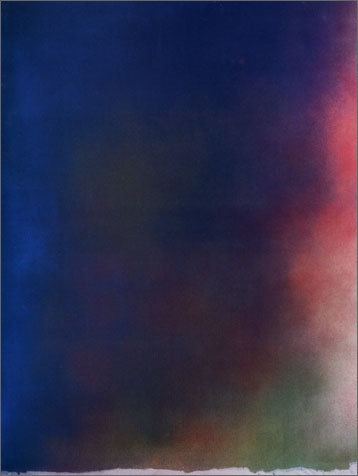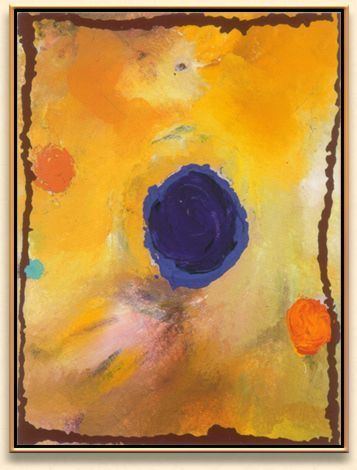Nationality American Name Jules Olitski | Role Painter | |
 | ||
Full Name Jevel Demikovski Movement Color Field painting, Lyrical Abstraction, Abstract Expressionism Artwork Cleopatra Flesh, Fanny Dimes, Untitled #9 Spouse Joan Olitski (m. 1980–2007), Andrea Olitski, Gladys Katz Periods Lyrical abstraction, Color Field, Modern art, Abstract expressionism Known for Painting, Sculpture, Printmaking | ||
Paul kasmin jules olitski
Jevel Demikovski (March 27, 1922 – February 4, 2007), known professionally as Jules Olitski, was an American painter, printmaker, and sculptor.
Contents
- Paul kasmin jules olitski
- Revelation major paintings by jules olitski
- Early life
- Education
- Career
- Recent
- Family
- Criticism
- References
Revelation major paintings by jules olitski
Early life

Olitski was born Jevel Demikovski in Snovsk, in the Ukrainian SSR (now Ukraine), a few months after his father, a commissar, was executed by the Soviet government. He emigrated to the United States in 1923 with his mother and grandmother and settled in Brooklyn. His grandmother cared for him while his mother worked to support the family. In 1926 his mother married Hyman Olitsky (note "y" ending), a widower with two sons. A daughter was born in 1930.
Education

Olitski showed an aptitude for drawing and by 1935 was taking occasional art classes in Manhattan. He attended public schools in New York, winning an art prize upon his graduation from high school. At an exhibit of the work of some of the great masters at the New York World's Fair in 1939 he was very impressed by Rembrandt's portraits. Subsequently he won a scholarship to study art at Pratt Institute and was admitted to the National Academy of Design in New York. His education continued at Beaux Arts Institute in New York from 1940-42.

After discharge from the Army in 1945, Olitski married and travelled to Asheville, NC and Mexico, returned to New York, and then in the late 40s went to Paris on the G.I. Bill where he studied at the Ossip Zadkine School and the Académie de la Grande Chaumière, both in Paris. In Paris he saw the European modern masters and engaged in a severe self-analysis, which involved painting while blindfolded to remove himself from all of his customary habits and facility.
Having returned to New York in 1951, Olitski received his B.A. in 1952 and his M.A. in 1954 in Art Education, both from New York University
Career
Olitski had his first one-person show at Galerie Huit, Paris in 1951. He returned to New York, reacting against the color and imagery of his Paris works, he began to paint monochromatic pictures with empty centers. He divorced and began exhibiting in group shows, and by 1956 was remarried and had joined the faculty of C. W. Post College on Long Island. In 1958 he had his first New York one-person show, at the Zodiac Room of the Alexander Iolas Gallery, and met Clement Greenberg, who exhibited Olitski's paintings in a large solo show at French & Company in May 1959.
In 1960 Olitski abruptly moved away from the heavily encrusted abstract surfaces he had evolved and began to stain the canvas with large areas of thin, brightly colored dyes. These were shown at a second French & Co. exhibit, in April 1961, and he was asked to join the Poindexter Gallery, where he had several exhibitions. Thereafter he exhibited in numerous venues, won a prize at the Carnegie International and began to be collected by museums.
By 1965 Olitski had evolved a radically innovative technique of laying down atmospheric blankets of colored spray on the canvas, marked at first by barely discernible straight-edged value changes near the edge of the picture and later by acrylic paint dragged along portions of the edge. He exhibited internationally in the late 1960s and was selected as one of four artists to represent the United States at the Venice Biennale in 1966. In 1969 he was invited to exhibit large, aluminum, spray-painted sculptures at the Metropolitan Museum of Art becoming the first living American artist to be given a one-person exhibition there.
He taught at Bennington College from 1963 to 1967.
In the 1970s Olitski returned to the thick impasto surfaces which characterized his work in the 50s but with innovative techniques that took advantage of the newly improved polymer and gel acrylic mediums. In 1994 he was elected into the National Academy of Design.
His late works from 2001 through January 2007 are characterized by intensely colored orbs that can evoke landscape or skyscape. As Norman L. Kleeblat states in his essay in the catalog that accompanies the exhibition Jules Olitski-The Late Paintings-A Celebration, at Knoedler and Company Nov 2007-Jan 2008. "The intensity of Olitski's colors can feel jarring when each colored area is observed separately. But the artist is a master of unlikely clashes of intense and artificial-looking colors recalling Delacroix.". Olitski had over 150 one-person exhibitions in his lifetime and is represented in museums worldwide. He has received honorary doctorates from the University of Hartford, Keene State College, and Southern New Hampshire University.
Recent
Olitski lived and worked in studios in New Hampshire and Florida and exhibited regularly until his death from cancer in 2007, aged 84.
Family
Jules Olitski is survived by his wife of 32 years, Kristina Olitski, his daughters Lauren Olitski Poster and Eve Olitski, his step-daughter Natasha Cebek, and his grandchildren Ariel Poster, Harry Poster, Chloe Cebek, Daphne Cebek, and Ian Cebek.
